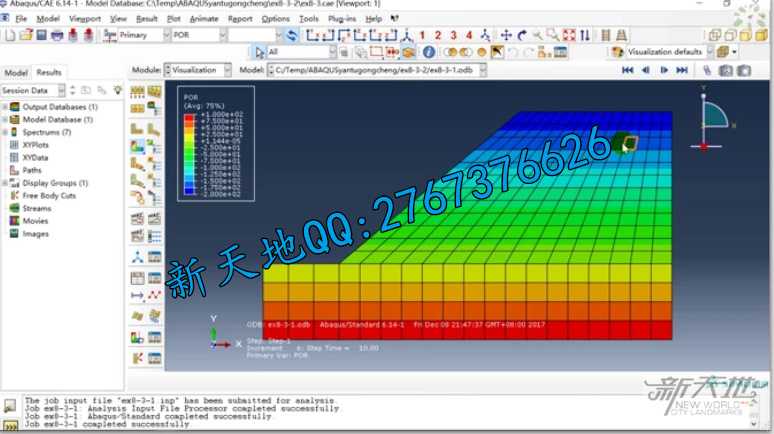

As it turned out the NAFEMS Conference was a fantastic event, and one which has been better each time it has been run. I’d expected to be rejected, or presenting to 15 people in a side room. You sometimes have to be careful – one minute I’m sending an email with a few comments about how I think training should be done (yes, that again), the next I’m giving a talk about it at a plenary session. These are being run around the country in July.

#Abaqus 6.14 or 6.13 series#
(In fact I think even DS were light on this.) So SSA are running a series of whats new in 2014 events which will look at developments in the core functionality, as well as looking at FE Safe, Tosca and Isight. Its easy to forget that something like the 3DXP analysis apps don’t really have any meaning without being powered by the world’s leading non-linear analysis code. And doubly great was that by being there with a number of our customers I got to go to a few. Any progress I make in the field of CAE (Computer Aided Engineering rather than the Complete Abaqus Environment) is largely based on these sort of conversations, so the fact that these were part of the program was great. The highlight of the SCC for me was the meet the expert sessions. Some pretty impressive meshing technologies coupled to the visualisation indicate a really impressive direction of travel, and one which compliments the current CAE based solutions. We are getting increasingly up to speed with this new technology, and there are already areas such as hi speed visualisation where the technical leap forward offers us a real improvements in productivity and presentation. Which as I have said before in this blog looks increasingly interesting. So essentially the SCC content from DS was all about the 3D experience platform. So sometimes I struggle to find things to blog about, then 3 come along at once.
#Abaqus 6.14 or 6.13 update#
(In all honesty I’m not sure these videos have worked well on you-tube – I’ll update them as soon as I can) so its going to stay grey and solid looking. But I grew up near the Thames in the 70’s and the water just wasn’t like that. I was going to try and make the water transparent and blue.
#Abaqus 6.14 or 6.13 full#
But it has proved that a full FSI model of this type can be run on moderate hardware in a fairly sensible timescale (most of the runs were done over weekends on 16 processors.) If there is one thing that this isn’t, its a fully researched model of a maritime accident. And when the ripping action was right the water just flowed into the hull. Which was basically about initial velocity and element deletion criteria. The remainder of the work concerned achieving the desired ripping action. Hardly a great surprise when you think about it. But when we’d done a bit of work and come up with something that approached a credible barge design these unwanted dynamics went away. Most of our early attempts were somewhat too dynamic and bounced around a lot. The first difficulty centred on getting something like a sensible barge designed. (We’ve actually started to use CEL for real at SSA in a number of projects.) The model is, in many ways, a standard CEL set-up – the water is modelled as an original fluid volume in an Eulerian domain, the boats are shell structures.

So as regular followers will know there is something of a CEL theme to these blogs. And if the boats were going to collide I wanted a hole to appear, and you’re probably ahead of me here if there’s a hole then the boat has to fill with water. What I wanted to make was a model of two boats colliding, but as a fluid structural interaction model, rather than neglecting the water, which seems to have been the way these things have been modelled in the past. So thanks very much to Alexandra Bellinger who did most of the actual work on this one. Having somebody who wanted to learn a bit about simulation around for a couple of weeks earlier in the year, was, as usual, what made it happen. The model that I’m blogging about today is one of those that I wanted to build for a long time. (As usual a simple test model built for fun has spawned a whole strand of out of hours work.) The results are generally pretty convincing when compared to the films I’ve seen, but I’ll save the update on that for another time. In fact what I’m getting currently is really, really encouraging, but I’m now investigating different approaches to mesh definition and adaptivity and how these effect results quality. So I’d promised a technically focused blog and suggested that it might be about bouncing bombs… Well the bouncing bombs are still a work in progress.


 0 kommentar(er)
0 kommentar(er)
